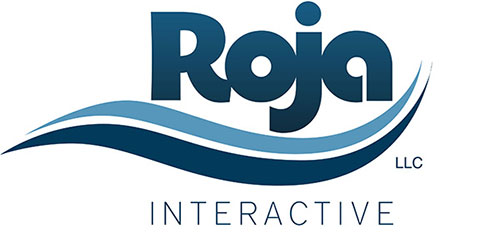How to Attract Customers While Reducing Your Advertising Costs
Just because it’s advertised, doesn’t mean people care.
While the main focus of our business is to design and build websites for our clients, we also strive to help the find more customers, as well as optimize the money they spend on advertising. Over the years, our experience with small businesses has shown us what works and what doesn’t work, and how to effectively, and quickly implement what does work.
We’re not going to give everything away, but we are going to share a few tips and secrets to help you expand your customer base and cut advertising costs.
Focus on the Hierarchy of Human Needs
Humans have a list of needs that, almost without exception, everyone subscribes to. When a business ignores this list and begins looking at customers like statistics or profit margins, that business will quickly stop being relevant. Businesses that focus their advertising efforts on that list of desires and necessities and remove all information that is not directly applicable to their target market, are much more successful. These needs are:
- Superiority – the need to have things no one else has, or to keep up with the trendsetters
- Companionship – the desire to be part of the group, find a companion, have society’s approval
- Freedom – the need for independence, also to be free of pain or fear
- Survival – the desire to protect your image or popularity
- Enjoyment – the desire for fun and contentment
We can easily see the lack of focus on these five basic needs in advertising today. How often does a commercial point out all the interesting facts about a product…but never actually details how the product could improve your life? Or how often do you see advertisements that are all about the company—how many years they have been open, how many people they employ—and yet, the do not ever talk about what all that has to do with providing the best product and the best price.
Instead of talking about how many years they’ve been in business, they should be talking about how the Jones’ down the street have a brand new car parked
in their driveway…but won’t they be jealous of your luxurious new carpet?
The specific details of the company are superfluous for most consumers. They don’t care how many people work in the building, or how big that building is, or even how old the building is. The consumer only cares about what those people in that building can do to improve the consumer’s life. They want to know how your product or service will fulfill one of those five needs listed above.
Let’s see how you can utilize each of those needs to make your advertising more effective.
Superiority
Whatever the product or service, one of the most effective ways to get people to buy it is to make them feel special because they have it. Make them believe that what you offer is the best thing on the market. Not necessarily that you are the best company, but that your products and services are the best—and will make the individual better for having invested in you.
Say, for example, you are an orthodontist. You may be tempted to pack your advertisements full of your personal achievements—your Ivy League education, your talented staff—but what consumers truly care about isn’t your level of knowledge, but rather whether or not you can give them the straightest smile. Because in the end, you customers don’t purchase your degree, they purchase a straight smile. So tell them how you can provide the straightest smile with the least amount of pain.
Companionship
This is a broad and varied need, but at its very core, it is a desire to not feel alone. For many products, the connection to fulfilling this need is not going to be clear. Office chairs, for example, have no direct, tangible link to solving loneliness in a consumer’s life. But this is probably not the right approach. Looking at this situation from the “you are not alone,” angle is much easier and probably more effective. That consumer is not the first person
to buy a chair, and that means that when they purchase your chair, they are connecting with all the chair buyers before them.
It sounds a little ridiculous, but even something as simple as a list of positive reviews or testimonials will provide consumers with the human link they need. Hiring a recognized spokesperson is another common way of utilizing the need for companionship. When the consumer sees someone they respect wearing or using a product, they feel an instinctual desire to be part of that person’s group, and they can do that by purchasing your chair, hat, shirt, etc.
Freedom
There is nothing in the world that American consumers cherish more than freedom. It may seem like money is the most important desire, but the acquisition of money is, at its root, the desire to be free from financial worries. Most companies have recognized the desire for freedom and have implemented advertising strategies that directly address this. Some of the most common “freedoms” that businesses target are freedom from pain and freedom of choice.
Because necessity is the mother of invention, most products and services are created with a “freedom” in mind. Progressions in technology, fashion, medicine, etc. are spurred on by a need in the market. If you can highlight how your company can free the consumer from some kind of burden, you probably have a very effective advertisement on your hands.
Survival
Consider, as an extreme example, the commercials for those life-saving buttons and security systems, usually geared towards the elderly and their loved ones. These advertisements capitalize on the basic human desire to continue living. And these commercials are wildly successful, because they know how to emphasize to their target market the benefits of their product, while also highlight the fatal dangers of neglecting the purchase.
Now, your product might not be a life-saving one, but consider what it does protect. Chances are it protects something, whether it is a dog from heartworms, a lawn from dandelions, or a home from a burglar. There are, of course, going to be some companies that just do not fall into this category, but the majority of businesses find at least one way to leverage this need.
Enjoyment
Outside of “Freedom,” “Enjoyment” is the most widely targeted need. Think about it. Almost every product (especially on late night television) is going to be lauded as time-saving or life-improving. Even cleaning products are now either time-savers—which give you more time to live your life, to do the things you’ve always wanted to do—or as toys that double as toilet brushes and dusters. Now, even the most mundane and loathsome tasks are made fun with these great new products! Or at least, that’s what the commercials tell us. And these commercials are effective. People love the products and they buy the products happily, even if they are more expensive and even less useful than other methods. Why? Because they believe the product will better their lives.
When your product offers the consumer a better life, you product has direct value to them. You can say that your cars are bigger and faster than your competitors, and this may be a semi-effective strategy, but it is much more effective to say that they are bigger and faster so you can take your entire family to the beach, and have more time to spend there.
And don’t underestimate how much someone can enjoy having something bigger and better than their friends and neighbors. For some people, it is enough just to have something no one else has. They enjoy the feeling of superiority.
Bringing It All Together
Many companies are spending massive amounts of money on marketing strategies that just don’t work. They are spending millions on “branding,” which is important, of course, but “branding” does not actually sell the product. Only effective, targeted, need-based advertising can sell the product. Consumers don’t want to hear more information about you and your company than they do about the actual product and its usefulness in their lives.
After all, this rising generation of consumers is more self-centered and busy than any generation before them. They want to know how something will help them, as individuals, have more success, fit in, and have more freedom and enjoyment.
Stop focusing on all the great features of your company and start letting your customers know how you product or service betters their lives. When your potential customers see how your product or service fills their needs for superiority, companionship, freedom, survival, and enjoyment, every dollar you invest in advertisement will work twice as hard and bring you twice as many customers.





Leave a Reply